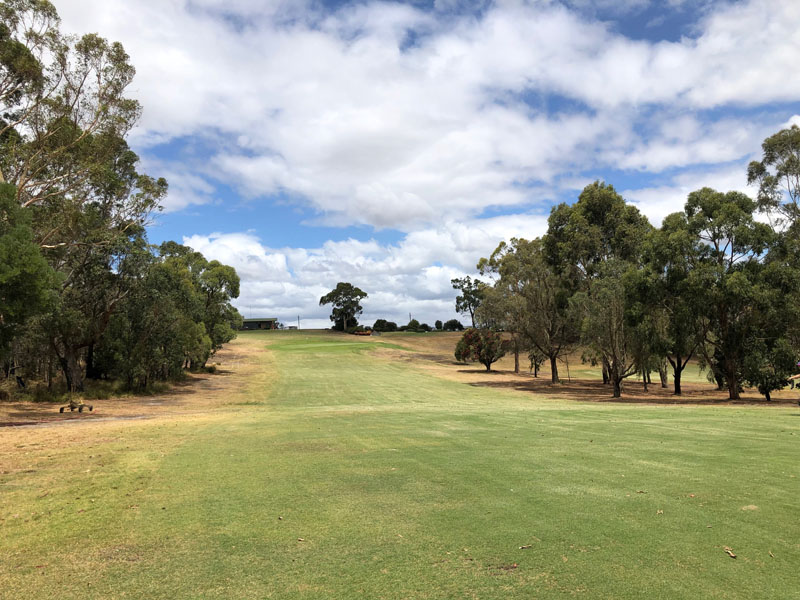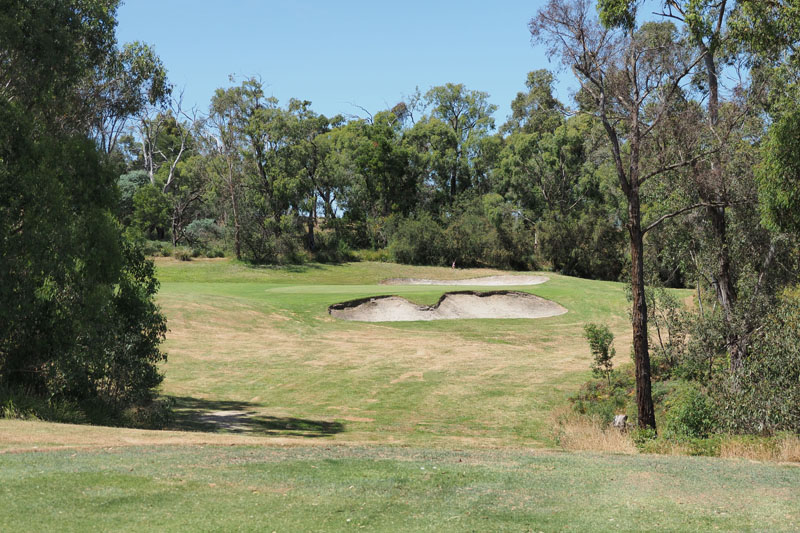A par 70 set across 5,647m for the Men and a par 72 measuring 5,070m for the Ladies, this is one of the most beautiful country golf courses in Australia. Although at first glance the physical measure of the golf course is not long, this course is demanding of accurate tee play and very assured execution of putting strokes.
With an abundance of bird life and native flowers, along with greens and fairways to rival some of the private metropolitan courses, you will love playing Trafalgar.
Front Nine
-
HoleMens: 385m, Par 4 |Ladies: 377m, Par 5
Welcome to Trafalgar. The opening hole is one of the more difficult holes on the course. Rated #2 on the Men’s card, this hole demands a long straight drive, leaving a mid to long iron second shot to an undulating green. A drive to the right will find the rough in ‘the humps’, or further right the trees will inevitably block your approach shot. The large undulating green is protected by subtle breaks and a deep bunker on the front left hand edge. The slope of the green often results in disappointment on the opening hole.
For the Ladies, Hole 1 plays as a par 5 providing a good opportunity for an opening birdie for low handicap golfers.
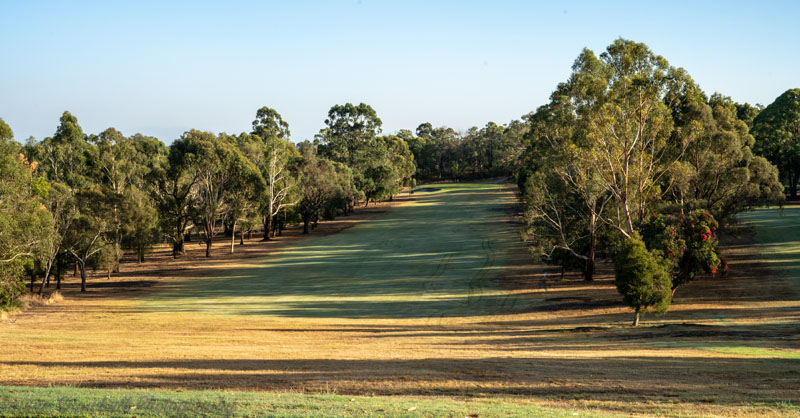
-
HoleMens: 176m, Par 3 |Ladies: 150m, Par 3
The first of five par 3 holes on the course. The second tee is surrounded by tall trees and native bush, which provides habitat to the native bird life and shelter from most wind conditions. Club selection is crucial for playing this hole. Depending on the season, the preferred club can range from a 7 iron up to a 3 iron. The green is sloped back to front and protected by bunkers to the left and right.
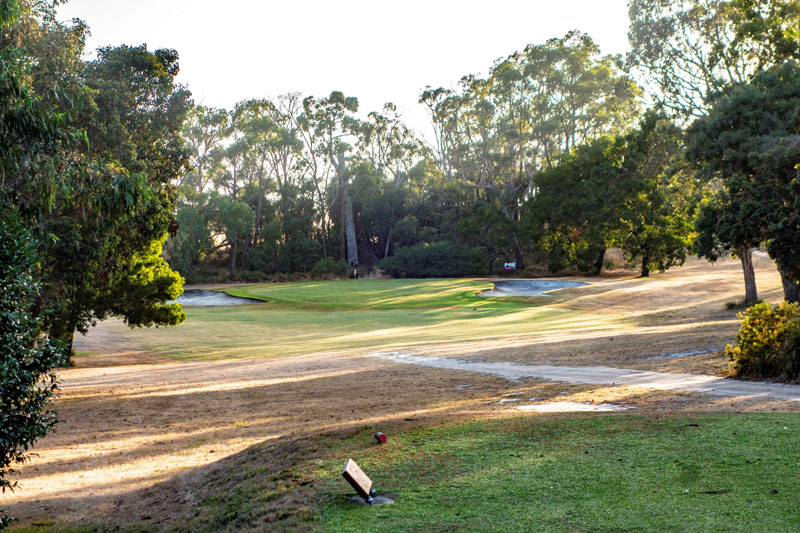
-
HoleMens: 338m, Par 4 |Ladies: 275m, Par 4
A typical Trafalgar hole, not long in distance but demanding of a well-placed tee shot. The general play is to take a 3 wood from the tee and hit a right to left shot following the line of the hole. A well-hit tee shot will catch a ridge that runs through the fairway. This may provide additional run leaving a low to short iron second. An errant tee shot will find trees or out-of-bounds to the right.
Protected by a single bunker on the right hand side, the green has a slope from left to right and is one of the trickiest greens on the course, often leaving a disappointed golfer walking off the green having had three putts!
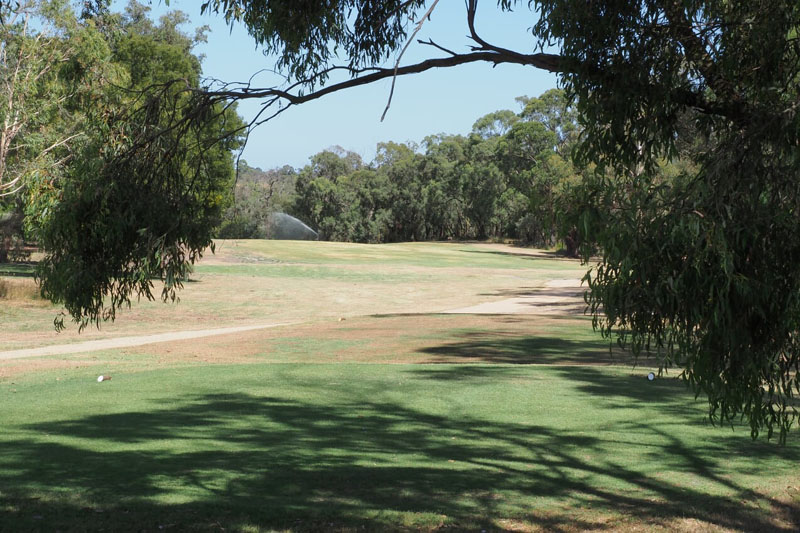
-
HoleMens: 380m, Par 4 |Ladies: 354m, Par 4
This left to right hole is one of the more difficult holes on the course. From an elevated tee, the hole requires a long tee shot central to the fairway to provide a mid to long iron approach shot into the elevated green. A tee shot right will find deep trouble or out-of-bounds, whereas an errant drive to the left will find either trees or the adjoining sixth fairway.
The approach shot to the green is critical and correct club selection is paramount. A short approach will not run to the elevated green and a long approach will find significant trouble to the rear of the green. The green itself is quite passive and a chip and putt often saves a par on this hole.
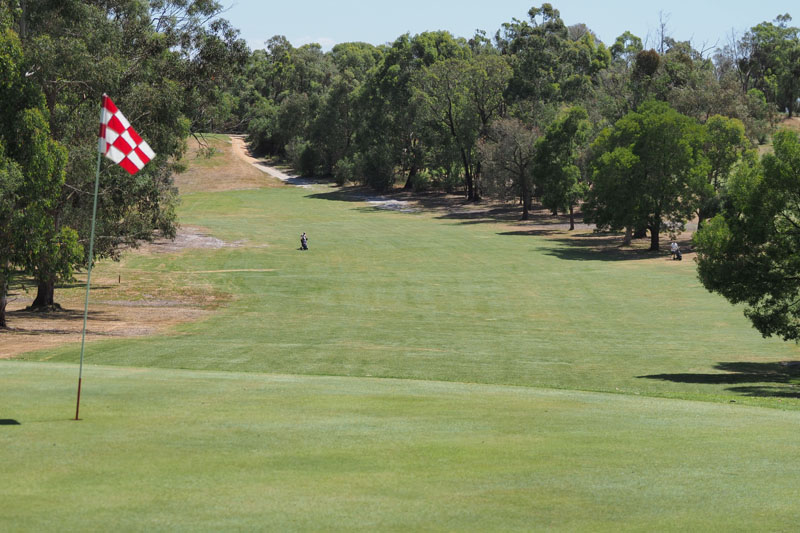
-
HoleMens: 112m, Par 3 |Ladies: 103m, Par 3
-
HoleMens: 435m, Par 5 |Ladies: 412m, Par 3
The first of the three par 5s at Trafalgar. Although not a long par 5, hitting the green in two is tough. Only a long tee shot along the right edge of the fairway, and then a strong right to left iron or fairway wood over a deep bunker protecting the front of the green will provide an eagle opportunity. The general play on this hole is the conservative one, playing for the middle of the fairway off the tee, a mid to long iron lay up shot leaving a short approach or long chip to the green for the third. Caution must be taken with this green as the subtle breaks make even the shortest of putts difficult.
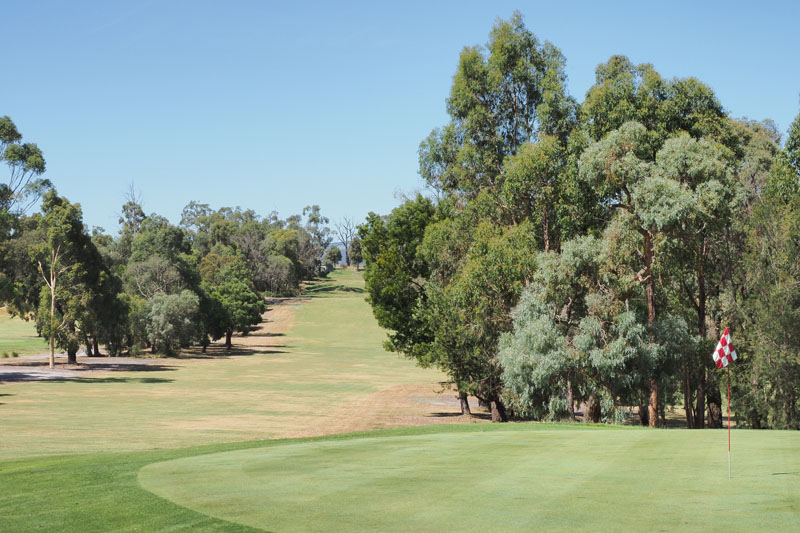
-
HoleMens: 278m, Par 4 |Ladies: 257m, Par 4
Hole 7 is another signature hole. A short downhill par 4 which is ‘drivable’ for the big hitters, providing they are very accurate off the tee. The tee is elevated and positioned amongst the natural bush, and the fairway is lined by mature eucalypt trees. A natural sandy bunker with grassy knolls protects the front right hand side of the green. Although not a defined hazard, it proves a challenge for a short chip onto the green.
The safe play is a long iron or a 3 wood from the tee leaving only a short pitch to the placid green. Another good chance for a birdie.
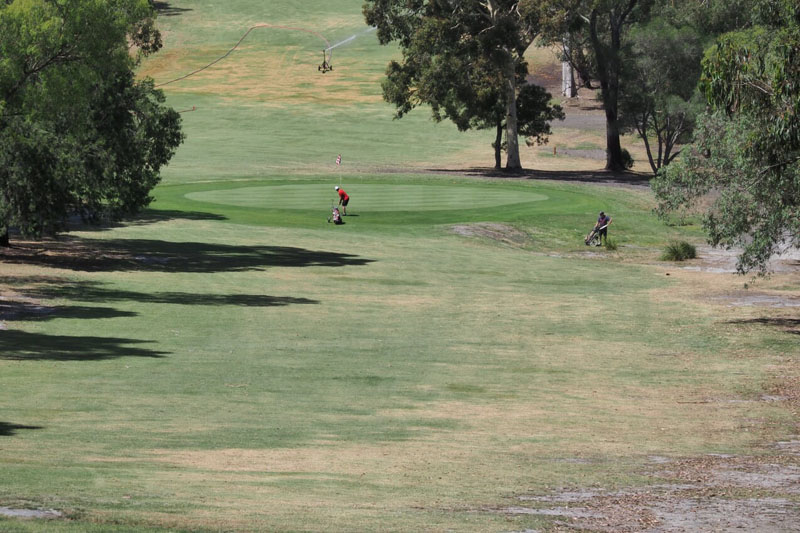
-
HoleMens: 326m, Par 4 |Ladies: 276m, Par 4
Another short par 4, this time with a blind tee shot over the ridgeline to a fairway with a left to right, right angle dogleg. The play on this hole is a 3 wood from the tee to the centre right of the fairway, leaving an approach of approximately 140m to the centre of the green. For the lower markers who can shape the ball, a fade for right handers or a draw for left handers can reduce the distance for the approach shot. However, an errant drive left, right or long, will be punished by the tree lined fairway.
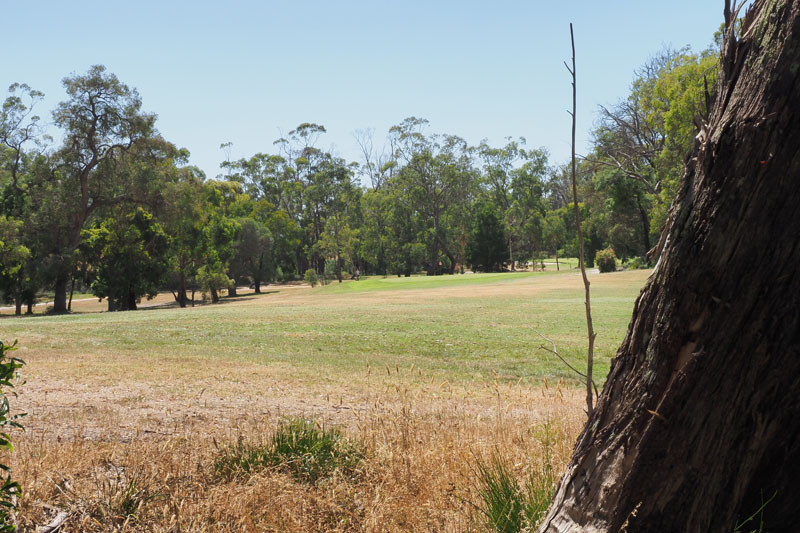
-
HoleMens: 379m, Par 4 |Ladies: 366m, Par 5
A long par 4 rated #4 on the card. This straight driving hole leads to a right to left dogleg fairway, then to an uphill green set amongst a natural bush setting. A drive to the left will make it difficult to reach this green in two, therefore straight or down the right hand side is the preferred line. A long iron second can be expected.
For the ladies a par 5 providing another good birdie chance for the lower handicappers.
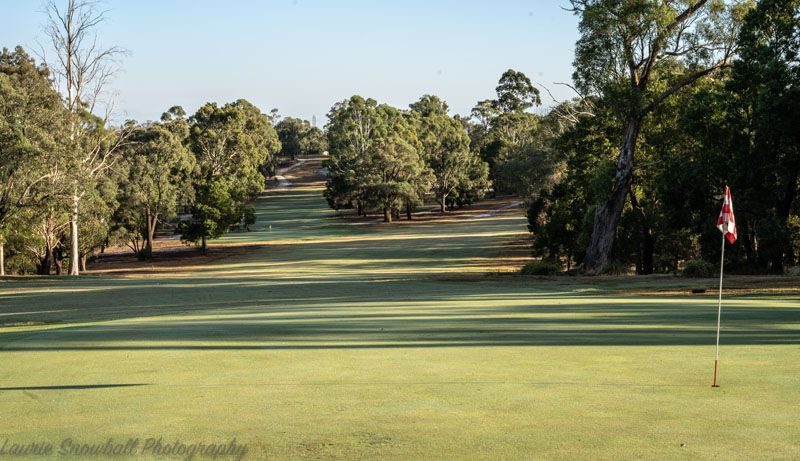
Back Nine
-
HoleMens: 531m, Par 5 |Ladies: 465m, Par 5
Hole 10 is a monster! A double dogleg 531m par 5 rated #1 on the card. Walking off this hole with a par is satisfying. Take either a driver or a 3 wood off the tee to the first of the doglegs. An errant drive left or right will find trees. The second is generally a long iron or a right to left shaped fairway wood leaving an approach of approximately 150m or less to the green, depending on the second shot.
There are no hazards in front of the wide back to front sloping green, although another green with subtle breaks reinforces Hole 10’s #1 status.
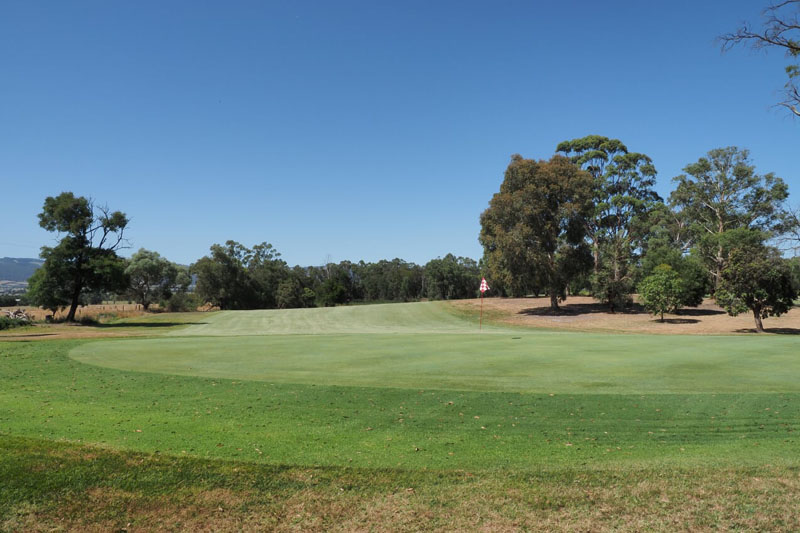
-
HoleMens: 154m, Par 3 |Ladies: 122m, Par 3
The third par 3 on the course. Playing 154m from the back tee, this picturesque hole hits across a valley to a green cut out from the natural bush. Protected on both the front right and left by bunkers, the green slopes gently back to front. The location of the pin is critical. It determines whether a safe shot to the heart of the green is made or a more aggressive approach is taken, taking on the protective bunkers.
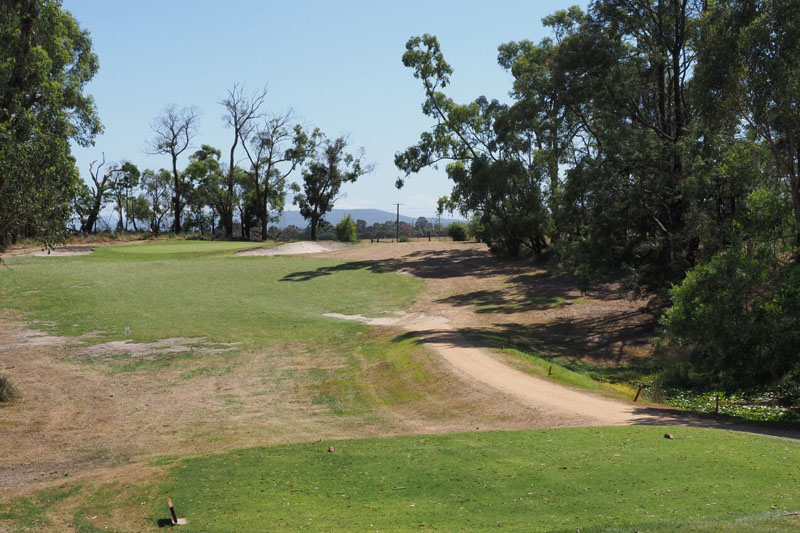
-
HoleMens: 302m, Par 4 |Ladies: 275m, Par 4
Another short par 4 that provides a significant birdie chance. Only drivable for the longest of hitters, the safe play is a solid driver or 3 wood to the crest of a ridge running across the fairway. This ensures additional run of the golf ball from the drive. A drive right often finds trouble so accuracy off this tee is a must. A short second will leave only a 9 iron or pitching wedge to a flat green protected by shallow bunkers on the front left and right.
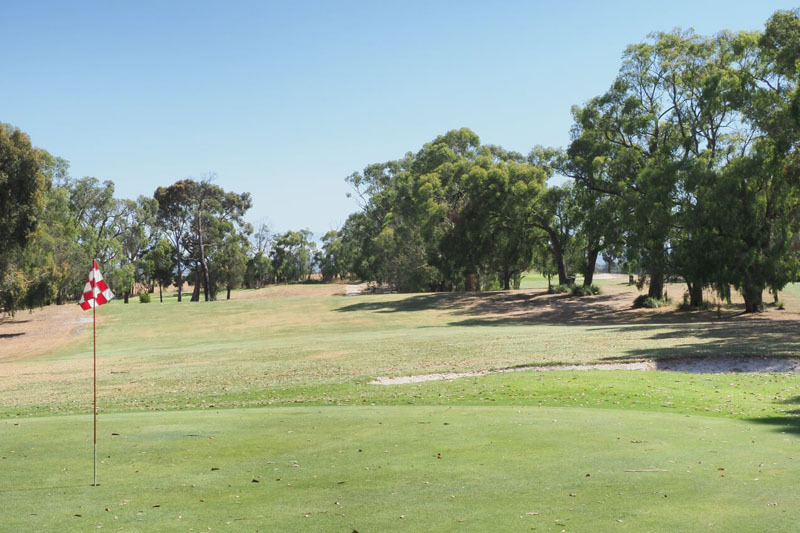
-
HoleMens: 155m, Par 3 |Ladies: 144m, Par 3
Similar in length to Hole 11, this par 3 often plays a club longer with the green exposed to the prevailing breeze. What initially looked like a good tee shot can often end up in the front bunker, leaving the golfer dumbfounded. A beautiful flat green is one of the best on the course and provides a perfect opportunity for sinking that monster putt for the day.
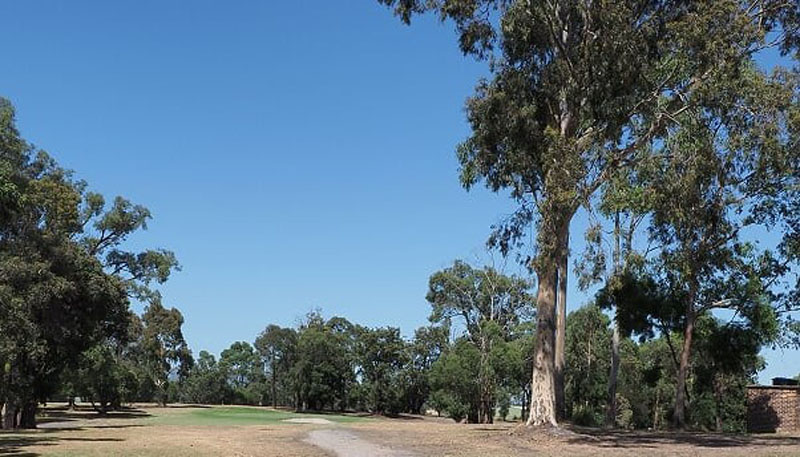
-
HoleMens: 445m, Par 5 |Ladies: 425m, Par 5
The last of the par 5s and a good opportunity for the low handicappers to birdie. A long drive down the left hand side of the fairway provides the tantilising choice of going for the green in two by hitting a blind left to right fairway wood or long iron to the hidden green over a ridge line. A drive to the right of the wide fairway ensures the hole is played as a three shot par 5. A lay up second to the top of the ridge leaves an attractive mid iron approach shot to an unprotected and smallish green with significant breaks.
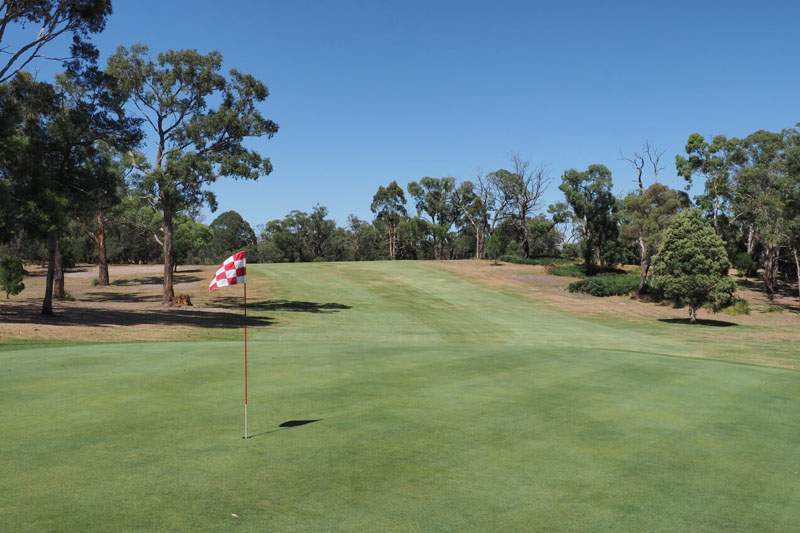
-
HoleMens: 173m, Par 3 |Ladies: 144m, Par 3
The last and the longest of the par 3s. Don’t hit the tee shot right. A series of tall trees and a large-facedbunker aggressively protect the right hand side of the green and good luck more than good management saves a par from there. The green is cut into a sandy bank, which significantly opens up the left hand side of the green with any shot green high and left feeding down the slope of the bank onto the green.
A three on this hole is always satisfying.
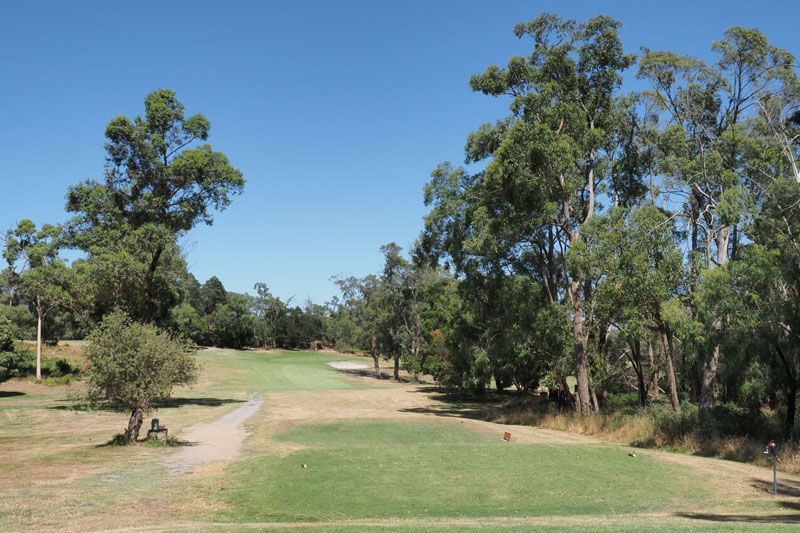
-
HoleMens: 334m, Par 4 |Ladies: 280m, Par 4
The home stretch, and the first of a series of three beautiful and uniquely challenging holes. Although not a long par 4, the drive here is again critical. The gentle left to right sloping fairway pushes most drives to the right hand side where the second shot forces you to take on a large eucalypt dominating the right hand edge of the fairway leading to the green. The play off the tee is to keep the ball to the left half of the fairway leaving a mid to short iron into another beautiful flat green, which gives another opportunity to hole a long putt.
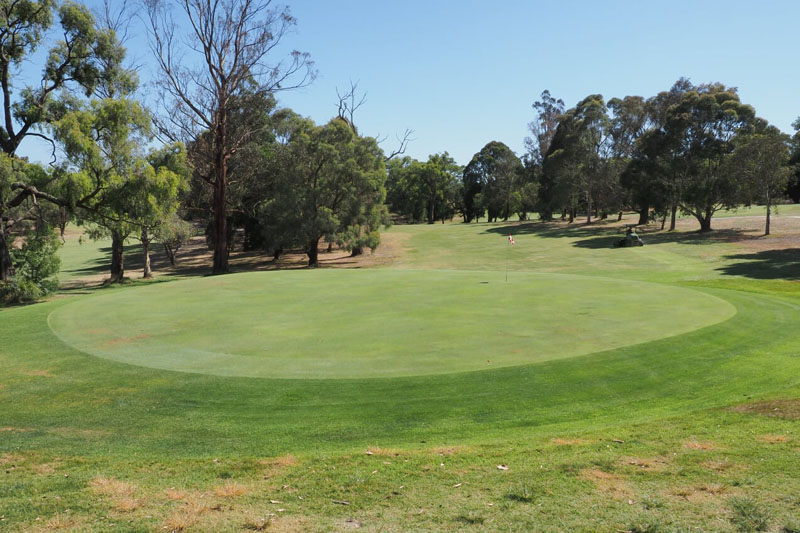
-
HoleMens: 378m, Par 4 |Ladies: 340m, Par 4
Rated #3 on the course, this is a brilliant hole. A long drive centre left is the A grade play, leaving a mid iron to another green cut into the hill. Errant drives striving for distance often find trees to the left and right. An accurate second shot is also necessary with approach shots missing to the left often catching the side of the supporting bank of the green. The result is a very awkward chip shot to a now elevated green.
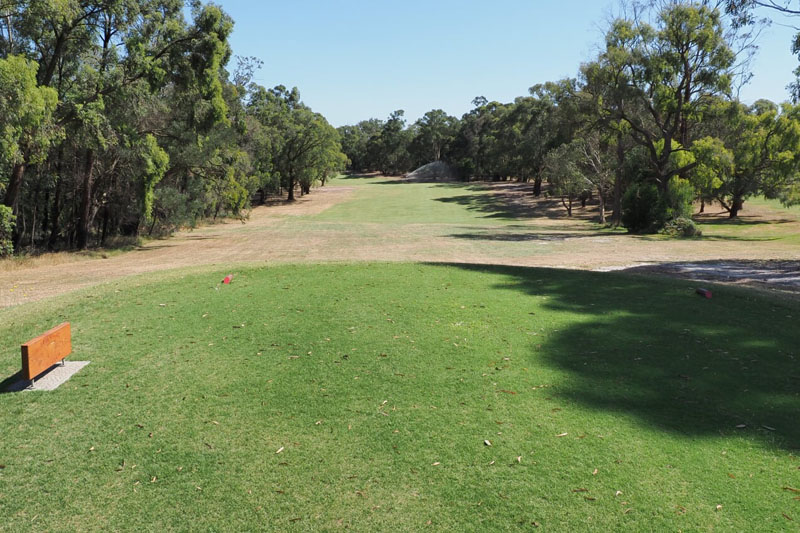
-
HoleMens: 365m, Par 4 |Ladies: 305m, Par 4
Almost there! However Hole 18 is not the time to lose concentration. This is a hole that can quickly unravel a potentially good round. The play off the tee is a long drive down the centre right, catching the downhill slope of the ridge running across the gentle left to right dogleg fairway. Catching this ridge dramatically reduces the loft of club required for the approach shot into the green. The second shot to this green needs to be precise with a short approach often rolling significant distances off the bank at the front of the green and creating a long chip for the third. A long approach can create a chip shot that’s almost uncontrollable in the summer months, which invariably ends in the same result as if the second shot was short. A tough putting surface with subtle, hard to read breaks brings relief when the ball disappears into the hole.
